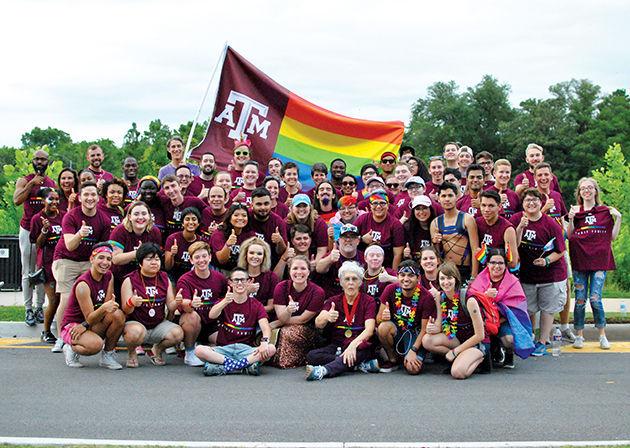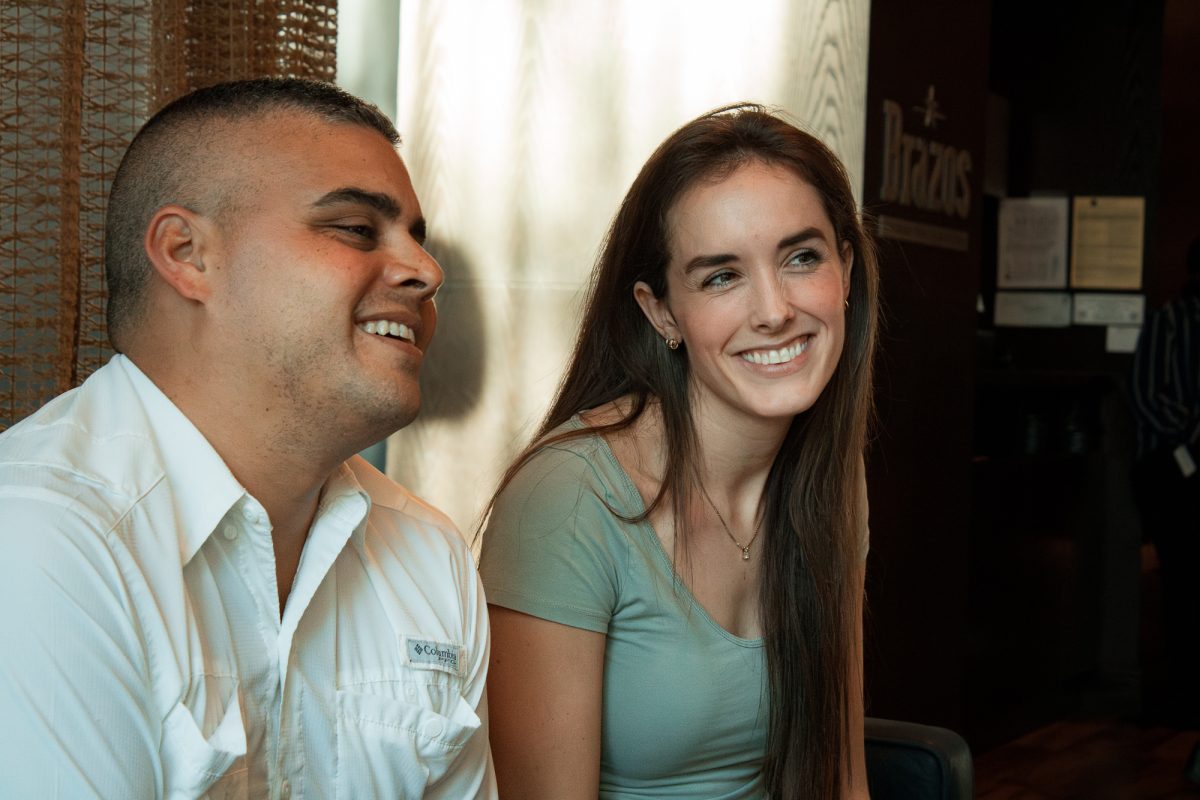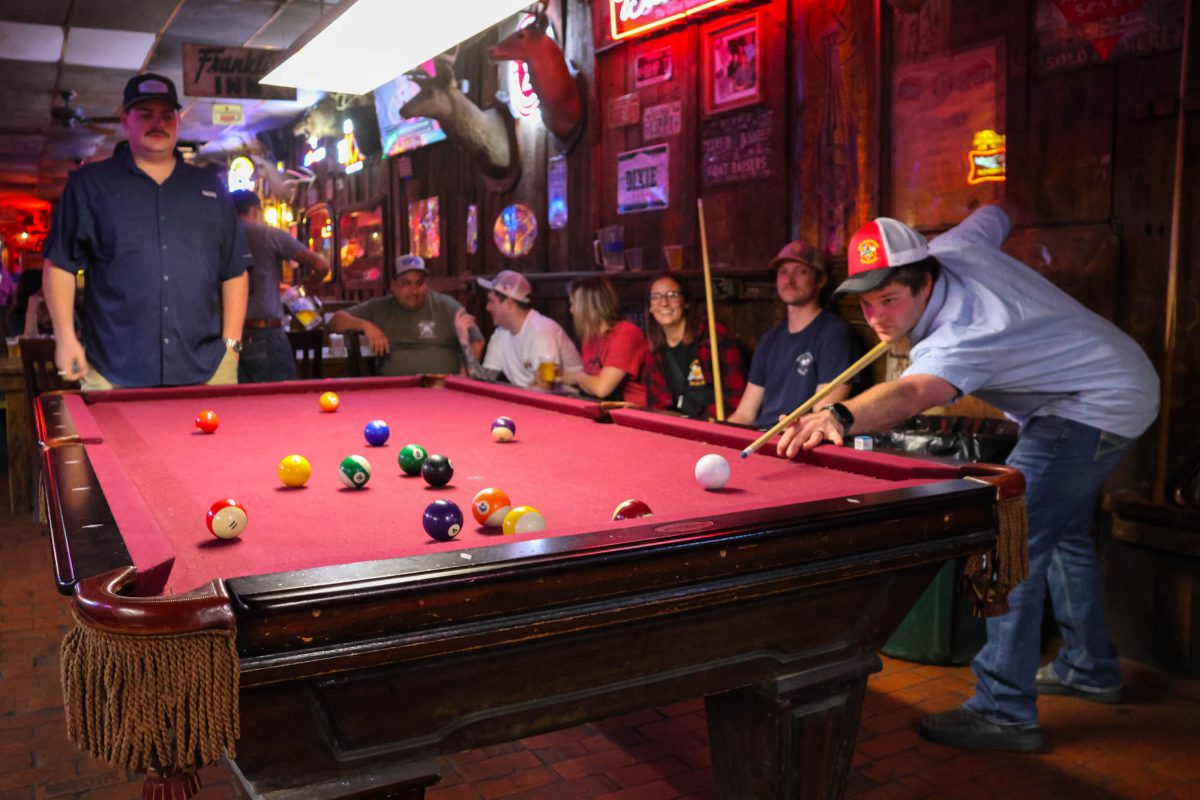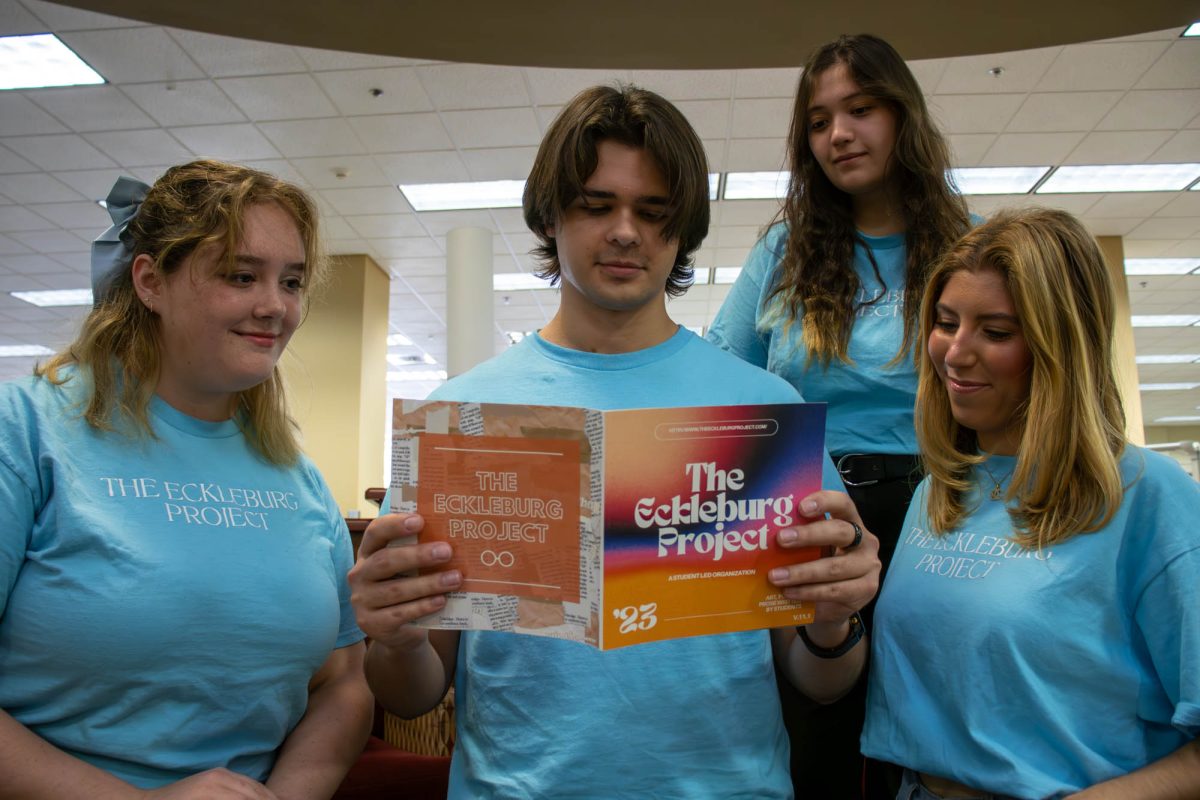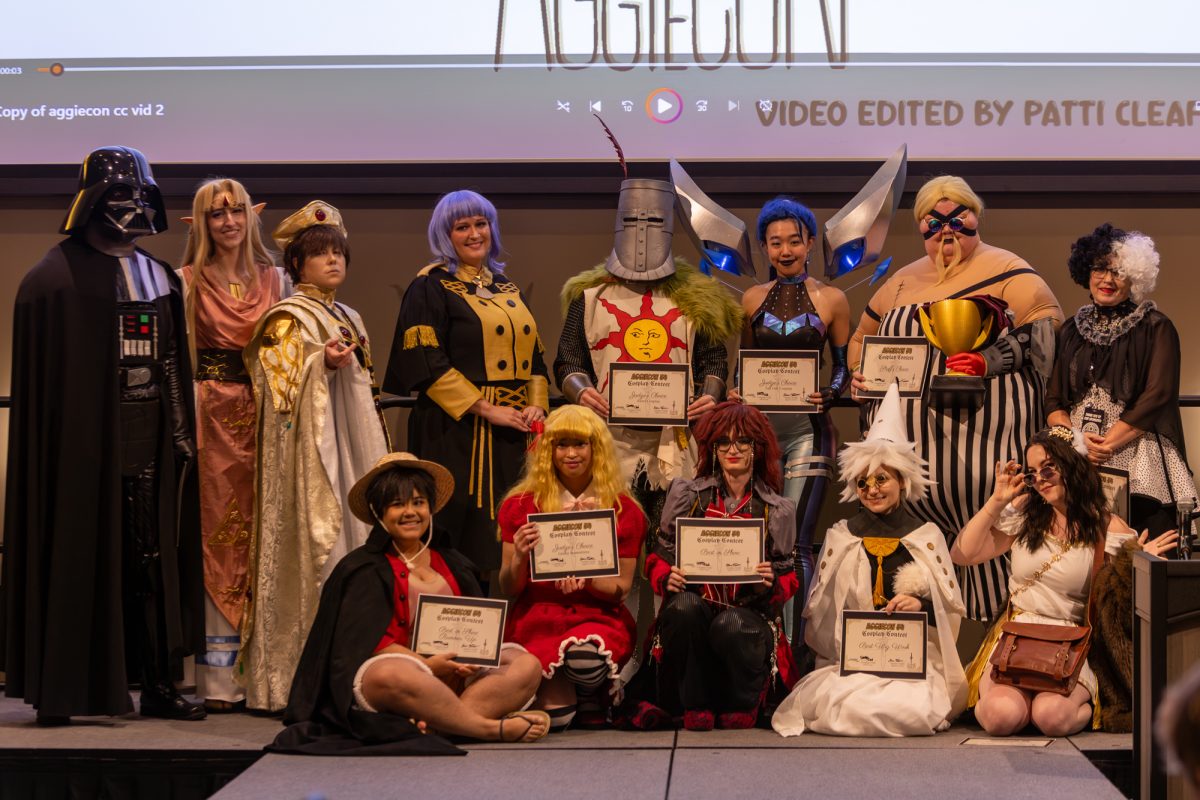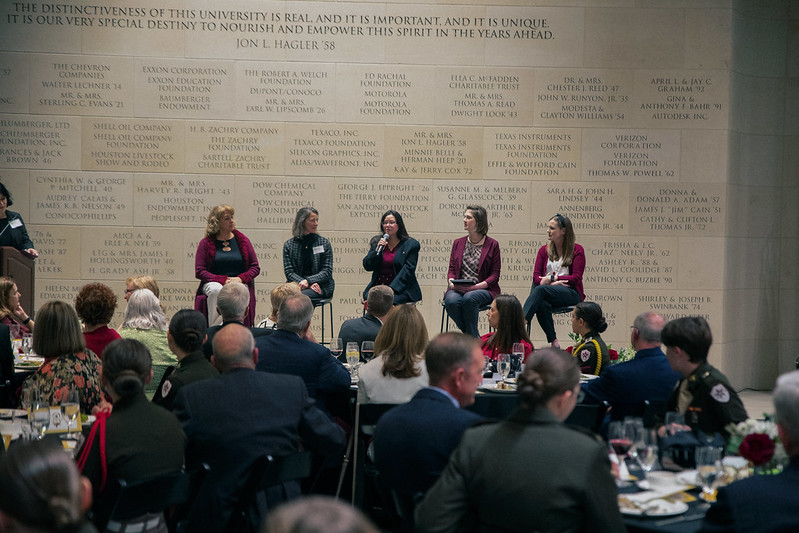On June 24, Texas A&M University made history when it officially participated in its first recognized Pride festival and parade in Houston.
Houston Pride is an annual event that takes place in Downtown Houston. The event includes a festival featuring exhibitor booths and performances by musical artists, as well as a night parade. This year, A&M marched in the Pride parade with support from university administration and staff.
“People were very shocked to see A&M marching in the parade, which speaks to the work we have to do in spreading our message,” Chad Leiper, Class of 2017, said. “When the parade announcer told the crowd that this was A&M’s first time marching, I remember feeling very proud that I was a part of that.”
Independent student groups have marched in pride parades in the past. President of the Aggie Pride LGBTQ & Ally Former Student Network and former Battalion staff member Brad Dressler, Class of 1996, said these groups helped pave the way for A&M’s current participation.
Leiper said that he enjoyed sending the message that A&M is a welcoming place for all members of the Aggie family.
“One of my favorite things about A&M is feeling like you’re a part of something bigger than yourself,” Leiper said. “I understand that historically A&M has not had the best reputation for LGBT+ students, but I think the work we are doing, and will do, can change that.”
Chad Mandala, program coordinator for Texas A&M’s Gay, Lesbian, Bisexual, and Transgender, or GLBT, Resource Center also noted a historic stigma around A&M concerning its tolerance of LGBT people and other minority groups.
“I think there’s this story about Texas A&M that is rooted in the 80s, 90s and early 2000s about who is welcome at Texas A&M,” Mandala said. “Showing up at events like this helps to showcase that Texas A&M is a place that really believes in providing a world class education to every aggie and that there’s not a delineation in the opportunities that are available to students based on who and how they love.”
In 1977, a group of gay students attempted to form an organization for LGBT services and support at A&M. When the group was denied by university leadership, they sued A&M for violation of the First Amendment. Gay Student Services v. Texas A&M went all the way to the Fifth U.S. Circuit Court of Appeals, where the court ruled in favor of Gay Student Services and ordered the university to officially recognize their organization.
“I don’t think a lot of people realize the necessity for a group to be able to organize on campus because so many people are able to live with their heterosexuality and it isn’t an issue,” Bobby Brooks, A&M’s first openly gay student body president, said. “That’s why we have to share out stories, and that’s why we have to be proud.”
The university also garnered attention in 2013 when the student senate passed a bill to allow students who had a religious conflict to opt out of giving money, through tuition and fees, to the GLBT Resource Center. The bill was stopped when John Claybrook, 2012-2013 student body president vetoed the bill, citing it as “great harm” to the reputation of A&M.
“It’s sad when a university downright denied the right for a group of students to exist the way that they are in such a way that is given to others,” Brooks said. “I think it was interesting the way that they went about that bill, the way it was being worded.”
However, A&M’s reputation for the LGBT community has been improving according to the Princeton Review. In 2016, A&M was removed from the Princeton Review’s list of the “20 Most LGBT unfriendly” colleges for the first time since the GLBT Resource Center was created.
“I don’t like to give too much hype to being removed from the Princeton list because we still have problems, but it’s a step in the right direction,” Brooks said. “It’s one of those ‘don’t get too comfortable’ kind of things, and it’s a reminder that while it’s a small victory, we need to keep making small victories until we can be truly accepted on this campus with everybody else.”
The GLBT Resource Center worked with both current and former student groups in order to coordinate both festival and parade participation.
The Aggie Pride LGBTQ & Ally Former Student Network coordinated with other universities who were participating in Pride Houston to host an intercollegiate pride mixer. Rice University, University of Houston and University of Texas’ alumni network, Texas Exes, attended the mixer.
“It was really fun to be able to put our rivalries aside and come together to celebrate Pride,” university studies senior Samuel Moffatt said. “Meeting former students and hearing about their time at A&M was really eye-opening, and it’s very encouraging to see how far we have come.”
Current and former students alike were invited to participate and volunteer in events throughout the weekend. Moffatt recalls meeting new people and sharing his Aggie story with festival attendees while he volunteered at the A&M booth.
“It was a time for us to come together and meet other people in our community while celebrating who we are unapologetically,” Moffatt said. “I made new friends and found a support system of fellow Aggies that I can look to for guidance throughout the rest of my time at A&M and even as a former student.”
Dressler acknowledged the diversity of the Aggies who participated in the weekend’s events.
“Participants included current students, former students, faculty and staff, LGBTQ+ Aggies, straight allies and more,” Dressler said. “These various members of our Aggie Family demonstrated their unconditional support for their fellow Aggies and the LGBTQ+ community.”
Dressler credited the high turnout and community participation to the cooperation between the GLBT Resource Center and other Aggie groups who planned the weekend’s events.
“It was emotional and impactful to see diverse representation of our Aggie community united in camaraderie and respect,” Dressler said.




